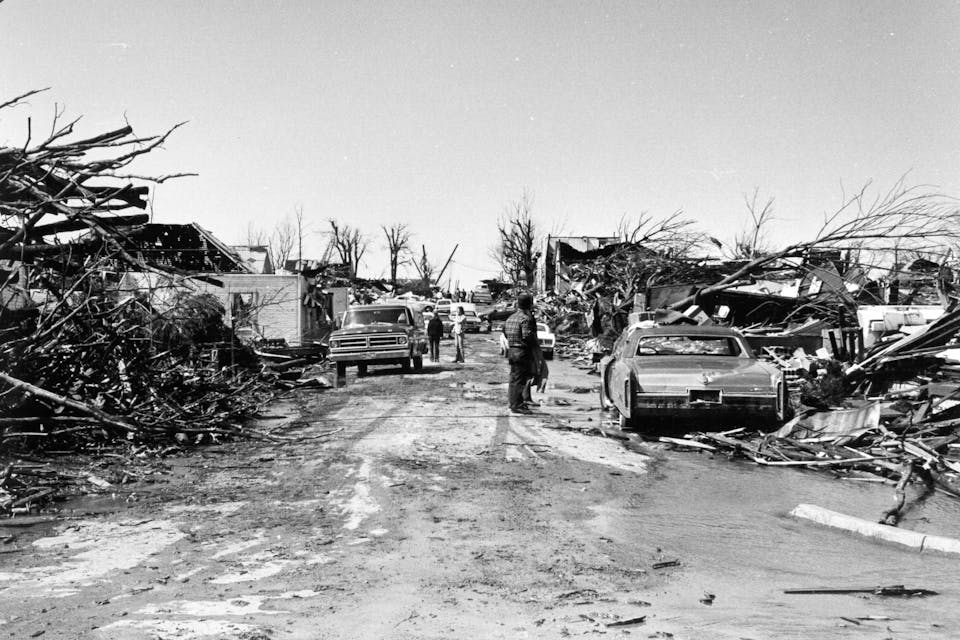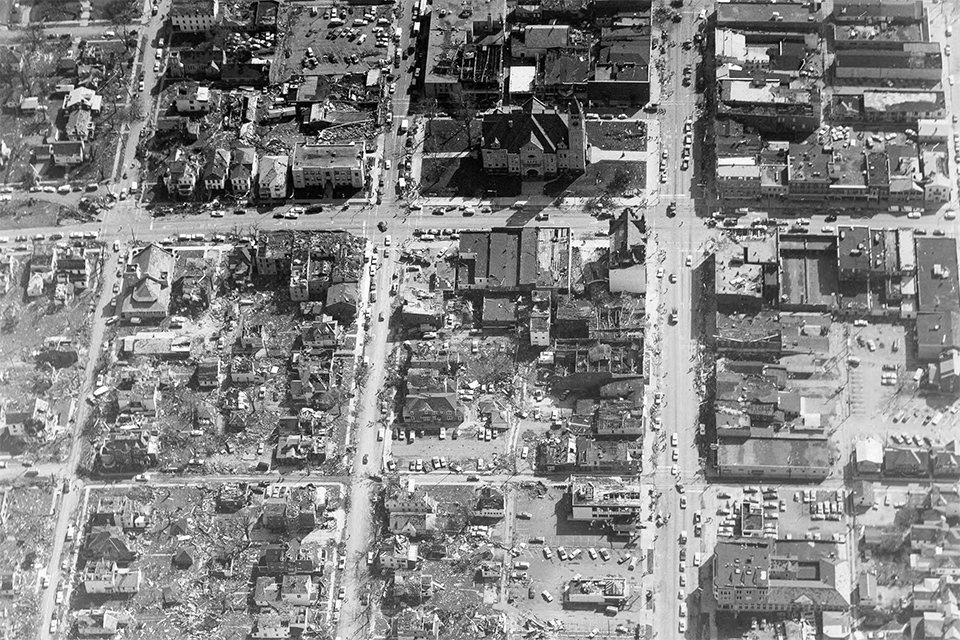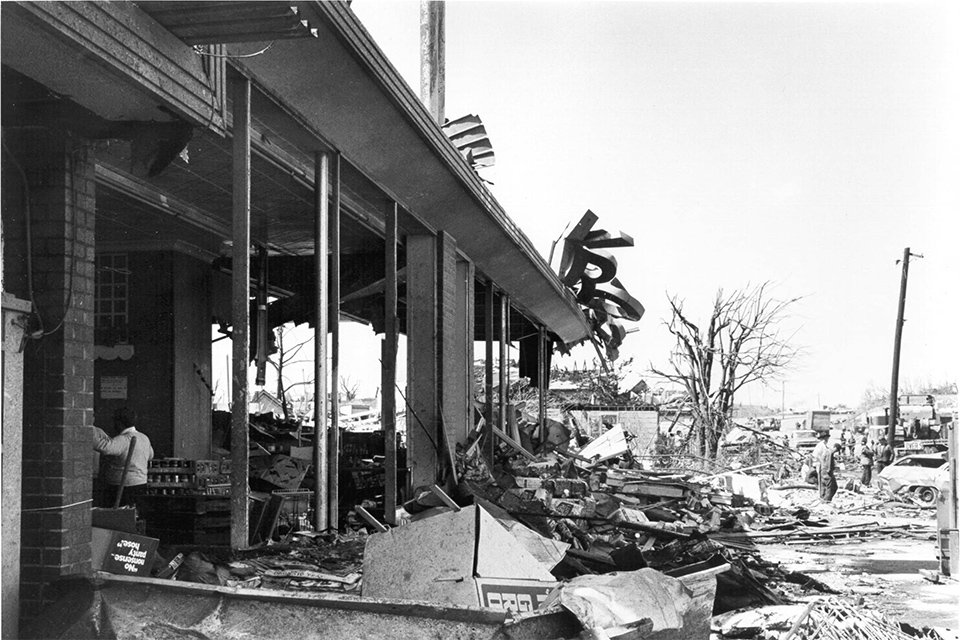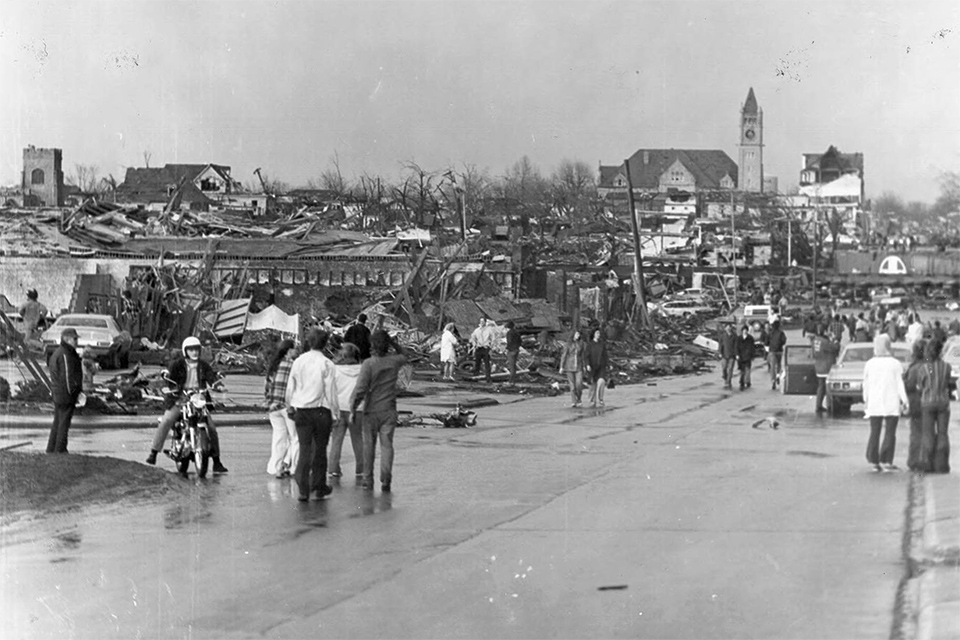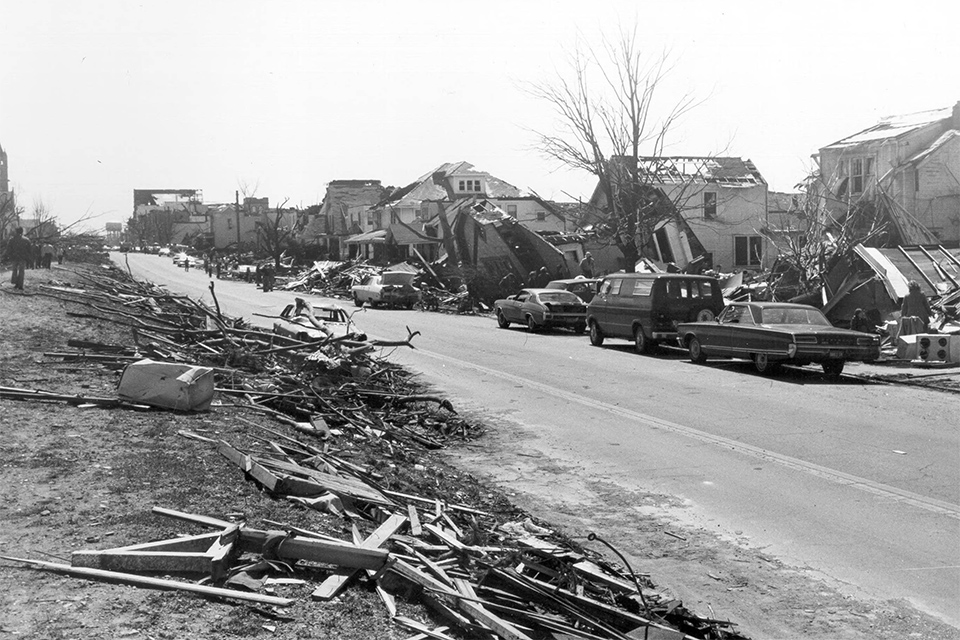Ohio Life
The Fury and Aftermath of the 1974 Xenia Tornado
In April 1974, a tornado that was part of a string of deadly storms ripped through the Ohio community of Xenia. It left a trail of destruction that is still remembered in and associated with the city to this day.
Related Articles

Backstory: The Mound Builders
We know little of the long-gone Ohio Adena and Hopewell. Yet their earthworks remain, silent testimony to the grandeur of their civilizations. READ MORE >>

Ohio Finds: Woven Coverlet
This item was made by Frederick E. Hesse in Logan, Ohio, in 1862. READ MORE >>

How a Mother and Daughter Built Frank Lloyd Wright’s Last Home in Ohio
The legendary American architect’s final home design was sitting on his drafting table at the time of his death. More than six decades later, Debbie and Sarah Dykstra put it on the Lake County property where it was always intended to go. READ MORE >>


